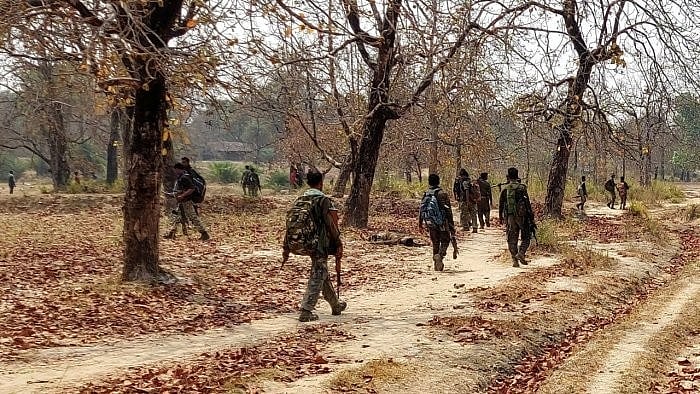
Security force personnel patrol after in Chhattisgarh.
Credit: Reuters Photo
Hyderabad: The killing of 27 Maoists in Chhattisgarh's Bastar region in a fierce gunbattle on Wednesday is seen as a major win for security forces. The death of the top Maoist leader, Nambala Keshav Rao in the encounter is being viewed as a major blow to the Naxalites.
Keshav Rao, in his 70s and known as a master military strategist, carried a bounty of Rs 1.5 crore. He was reportedly the mastermind behind several major attacks, including the 2010 Dantewada ambush that claimed 76 CRPF personnel and the 2013 Jeeram Ghati attack that killed 27 people, including Congress leaders.
The significance of Rao's death was underscored by Union Home Minister Amit Shah himself, who announced it as a "landmark achievement." As general secretary of CPI-Maoist and the backbone of the Naxal movement, Rao's elimination represents the first time in three decades that security forces have neutralized a leader of such high rank.
Nambala Keshav Rao in his early years
Credit: NIA website
Known by aliases including Basavaraju, Gaganna, and Prakash, Keshav Rao was born in 1955 in Jiyannapet village, Srikakulam district of Andhra Pradesh. He studied engineering at the Regional Engineering College (now NIT) in Warangal, where he became involved in left-wing student politics through the Radical Students Union (RSU), marking his entry into the Naxalite movement.
Rao co-founded the Communist Party of India (Marxist-Leninist) People's War in 1980 and rose to become a Central Committee member by 1992. Following the 2004 merger that formed the CPI (Maoist), he was appointed head of the Central Military Commission and became a Politburo member.
"During his college years, he became actively involved in radical leftist politics, which led to his arrest in 1980 after a clash with ABVP in Srikakulam. He left his village in the late 1970s to join the underground Naxalite movement and helped organise the CPI (ML) People's War in Andhra Pradesh, particularly in East Godavari and Visakhapatnam districts. In 1987, he received training in guerrilla warfare and explosives from former LTTE fighters in Bastar, developing expertise in guerrilla tactics and improvised explosive devices." a top intelligence source told DH.
He succeeded Ganapathy as General Secretary of CPI (Maoist) in November 2018 and subsequently intensified operations, especially in the Dandakaranya region.
The encounter took place near Maad, a Maoist stronghold between Narayanpur and Bijapur districts. COBRA commandos and Chhattisgarh police neutralized the Company-7 unit of the Maoists. Along with Rao, other top leaders killed included Madhu of the Dandakaranya Special Zonal Committee and Naveen, associated with the Maoist publication Jung.
The killing of Araku TDP MLA Kidari Sarveswara Rao and ex-MLA Siveri Soma on September 23, 2018, by the Maoists is also said to be masterminded by Keshav Rao.
"His journey from student activism to leadership in one of India's most notorious insurgent groups illustrates the enduring complexities of left-wing extremism in the country," the intelligence source added.
Keshav Rao was associated with naxalism for the last 50 years.